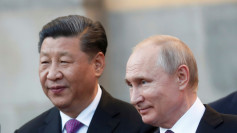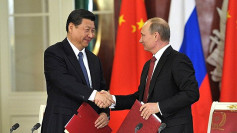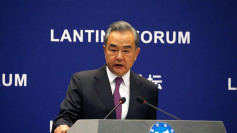China's trade surplus with the world in November rocketed to a new record high, hitting $227.4 billion, which was a 5.4% jump year-on-year. On the other hand, overall export growth decelerated due to weaker global demand.
Data released by the General Administration of Customs (GAC) confirm the growth rate in November was the lowest since exports plunged 3 percent in March after president Donald Trump began his trade war on major U.S. trading partners by imposing heavy tariffs on steel and aluminum exports to the U.S.
China's exports to the U.S. outpaced its imports from the U.S. by $35.6 billion in November, the highest trade gap ever, said the GAC. The rise was propelled by a 9.8 percent rise in exports compared to the same period in 2017, and a 25 percent plunge in imports. China's exports to the whole world rose 5.4 percent in November
Exports to the U.S. soared nearly 10 percent year-on-year to $46.2 billion in November. Imports into China from America dropped almost 25 percent to $10.7 billion.
China's import growth also suffered, hitting a two-year low. Analysts said this drop points to weak domestic demand despite China's efforts to stabilize economic growth with a raft of fiscal and non-fiscal measures.
The decrease in the import growth indicates domestic demand weakened in November despite Beijin's continuing efforts to stabilize growth. Among these stabilizing measures are accelerating government-led infrastructure investment and boosting other economic activities. Taken together, however, these measures seem to confirm the increasingly dire straits of China's economy.
And as part of these measures, Beijing has launched an unprecedented rescue effort for the private sector mainly aimed at boosting lending to firms and reducing their tax burdens. The results have been mixed at best. Local governments have also promised to bail out cash-strapped private businesses in an effort to stanch a surge in debt defaults.
In total, China's overall trade surplus rose to $44.75 billion in November, a 16.4 percent rise year-on-year. This was the largest surplus since December 2017.
Analysts noted that China's exports are being hammered due to the troubled economic outlook for the China and the rest of the world. China's export growth will end, according to analysts with China Merchants Bank.
China's foreign trade will eventually decelerate as domestic and foreign economic growth moderates and prices drop, said the bank.
As was the case from August to October, the increase in America's trade deficit with China was due to exporters continuing to front-load shipments to circumvent the increase in the U.S. tariff rate originally scheduled for Jan. 1, 2019. Because of this, exporters still had a motive to front-load in November, said China Merchants Bank.
The Trump administration has levied tariffs on $250 billion worth of Chinese imports since July. These punitive tariffs were imposed as punishment for China's alleged unfair trade policies such as the theft of American intellectual property. China has levied retaliatory tariffs in return.






